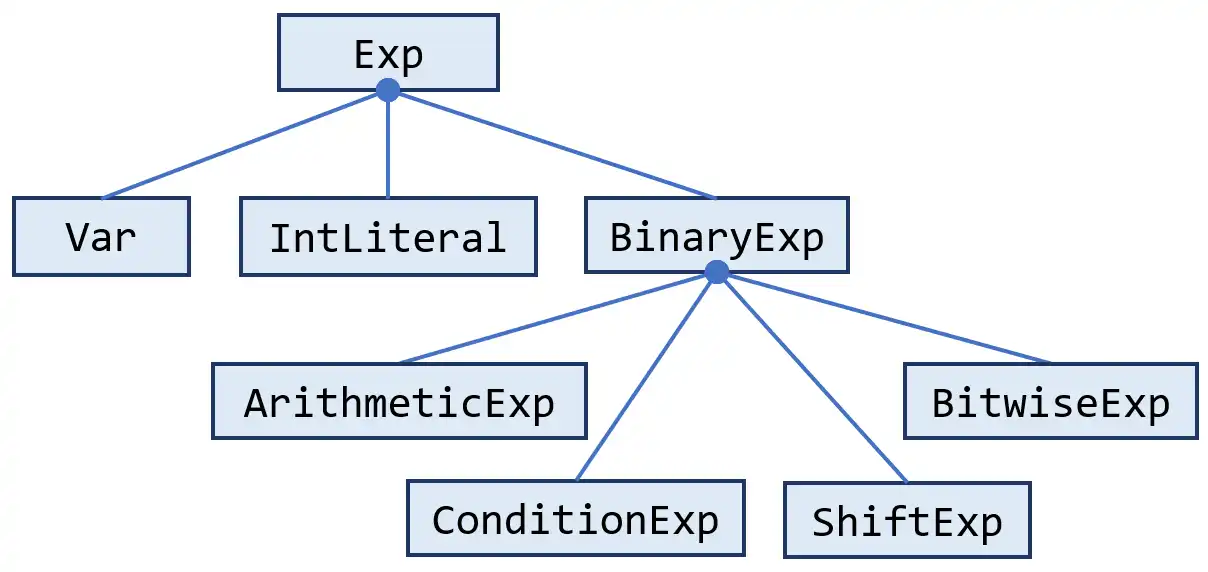Static Program Analysis PA-2
 bear
bear
1 Assignment Objectives
Implement a constant propagation for Java
Implement a generic worklist solver, which will be used to solve the data-flow problem you defined, i.e., constant propagation.
2 Basics to Know in Advance
Since the values of types boolean, byte, char, and short are also represented and computed as int values during run time, thus our analysis could handle the values of these types, not just the int type.
We only need to focus on the assigned statements whose left-hand side expressions are variables, and whose right-hand side expressions are:
Constants, e.g., x = 1
Variables, e.g., x = y
Binary expressions, e.g., x = a + b, and x = a >> b
For binary operations, we need to handle these operators:
Arithmetic: +, -, *, /, %
Condition: ==, !=, <, >, <=, >=
Shift: <<, >>, >>>
Bitwise: |, &, ^
Conservative Approximations
For the assigned statements(again, whose left-hand side expressions are variables) with other right-hand expressions, e.g., method calls (x = m(...)) or field loads (x = o.f), you should give them conservative approximations, e.g., x = NAC.
3 RTFC -- IR-related classes
pascal.taie.ir.IR
this class is the central data structure of intermediate representation in Tai-e, and each IR instance contains the information for the body of a particular method, such as variables, parameters, statements, etc. You can obtain this information through its APIs, which are all commented on in the source code.
pascal.taie.ir.exp.Exp

pascal.taie.ir.exp.Var
which represents the variables in Tai-e's IR.
pascal.taie.ir.exp.IntLiteral
Each instance of this class represents an integer literal in the program, and we can obtain the int value by calling its getValues() method.
pascal.taie.ir.exp.BinaryExp
This class represents binary expression in the program, and it has several subclasses, corresponding to different expressions as shown above.
pascal.taie.ir.stmt.DefinitionStmt
also called assigned statements.
pascal.taie.analysis.dataflow.analysis.DataflowAnalysis
An important class that needs no introduction.
pascal.taie.analysis.dataflow.analysis.constprop.Value
Value getNAC(): ReturnsNACValue getUndef(): ReturnsUNDEFValue makeConstant(int): Returns a constant for the given integer
pascal.taie.analysis.dataflow.analysis.constprop.CPFact
This class represents the data facts in constant propagation, i.e., the mapping from variables (
Var) to their lattice values (Value). This class provides various map-related operations, such as query/update key-value mappings, etc., and most of them are inherited frompascal.taie.analysis.dataflow.fact.MapFact. The APIs of both classes are commented on in the source code, and you should read the source code and decide which APIs to use in this assignment.pascal.taie.analysis.dataflow.analysis.constprop.ConstantPropagation
This is an important class we should implement.
4 Task-1 Implement ConstantPropagation
Implement the following APIs of ConstantPropagation
CPFact newBoundaryFact(CFG)CPFact newInitialFact()void meetInto(CPFact,CPFact)Before dealing with this method, implement
Value meetValue(Value, Value)first.boolean transferNode(Stmt,CPFact,CPFact)Before dealing with this method, implement
Value evaluate(Exp, CPFact)first.
Let's get familiar with constantPropagation first:
Given a variable x at program point p, determine whether x is guaranteed to hold a constant value at p.
As we said before, static program analysis mainly contains two parts
Abstraction Fact can be represented as
SetFact<Pair<Var, Value>>, and in Tai-e's implementations, which is represented asCPFact(extendsMapFact<Var, Value>)Safe-Approximation
Transfer Function: Given DefinitionStmt
x = ...,OUT[B] = (IN[B] - Pair<x, _>) + gen(B), and as forgen(B)it can be discussed in different contexts.1. x = 1 // x is assigned to literal, and gen(B) = {<x, 1>} 2. x = y // x is assigned to variable, and gen(B) = {<x, val(y)>} 3. x = a op b // x is assigned to an expression, then we need to exaluate // the whole expression gen(B) = {<x, f(a, b)>}As for the third condition,
f(a, b)can be divided into three parts:(1) Val(a) op Val(b), when both a and b are literal, it's straightforward to do the math.
(2) NAC, when at least one of a and b is NAC.
(3) UNDEF, other situations.
Control of Flow: OUT[S1], OUT[S2], ..., OUT[Sn] -> IN[B] The first thing we should clear is that each OUT (or IN) Fact is a set of Pair<Var, Value> (mapping relation from Var to Value)
Fact: { <var1, value1>, <var2, value2>, ..., <varn, valuen>}Ignoring for a moment whether the merge operation is ∪ or ∩, let's consider that for IN[B1] and IN[B2] the merge is done by taking out the Pair with the same key values from their respective sets and merging their values. For example,
Fact1 = { <x, 10>, <y, 10>, <z, 10>} Fact2 = { <x, 10>, <y, NAC>, <z, 20>} // After merging, we get the result Fact_Merge = { <x, 10>, <y, NAC>, <z, NAC>}
5 Task-2 Worklist Algorithm
Similar to PA-1, we need to get familiar with DataflowResult, CFG, and Solver classes.
DataflowResult An object which manages the data flow associated with nodes.
CFG Representation of the control-flow graph of a method.
Solver Base class for data flow analysis solver, which provides common functionalities for different solver implementations.
Besides, we need to know pascal.taie.analysis.dataflow.solver.WorkListSolver
After that, we can implement the WorkList Algorithm for Constant Propagation according to the lecture described:
OUT[entry] = ∅;
for (each basic block B\entry)
OUT[B] = ∅;
Worklist ← all basic blocks
while (Worklist is not empty)
Pick a basic block B from Worklist
old_OUT = OUT[B]
IN[B] = ⊔P a predecessor of B OUT[P];
OUT[B] = genB U (IN[B] - killB);
if (old_OUT ≠ OUT[B])
Add all successors of B to Worklist
After implementing the algorithm, we can have a look at the result:
Tai-e starts ...
Writing options to output\options.yml
WorldBuilder starts ...
Warning: main class 'Assign' does not have main(String[]) method!
9836 classes with 97661 methods in the world
WorldBuilder finishes, elapsed time: 6.98s
throw starts ...
1 classes in scope (app) of class analyses
2 methods in scope (app) of method analyses
throw finishes, elapsed time: 0.07s
cfg starts ...
cfg finishes, elapsed time: 0.04s
constprop starts ...
in is {}
in is {x=1}
in is {x=2}
in is {x=3}
in is {x=4}
in is {%intconst0=6, x=4}
constprop finishes, elapsed time: 0.01s
process-result starts ...
-------------------- <Assign: void <init>()> (constprop) --------------------
[0@L1] invokespecial %this.<java.lang.Object: void <init>()>(); {}
[1@L1] return; {}
-------------------- <Assign: void assign()> (constprop) --------------------
[0@L4] x = 1; {x=1}
[1@L5] x = 2; {x=2}
[2@L6] x = 3; {x=3}
[3@L7] x = 4; {x=4}
[4@L8] %intconst0 = 6; {%intconst0=6, x=4}
[5@L8] y = x + %intconst0; {%intconst0=6, x=4, y=10}
[6@L8] return; {%intconst0=6, x=4, y=10}
process-result finishes, elapsed time: 0.01s
Tai-e finishes, elapsed time: 7.30s
Submit
Fourth Submit:
Judge Log
Analyze 52 methods, pass 48 methods
There are 481 Stmts in all test cases
Your submission correctly analyzes 467 Stmts
[!] Failed on [hidden] testcase(s)
Tips: we will not give you any information about [hidden] testcase(s)
That's all, thanks!
REFERENCE
Subscribe to my newsletter
Read articles from bear directly inside your inbox. Subscribe to the newsletter, and don't miss out.
Written by

bear
bear
bear with us, while we think.